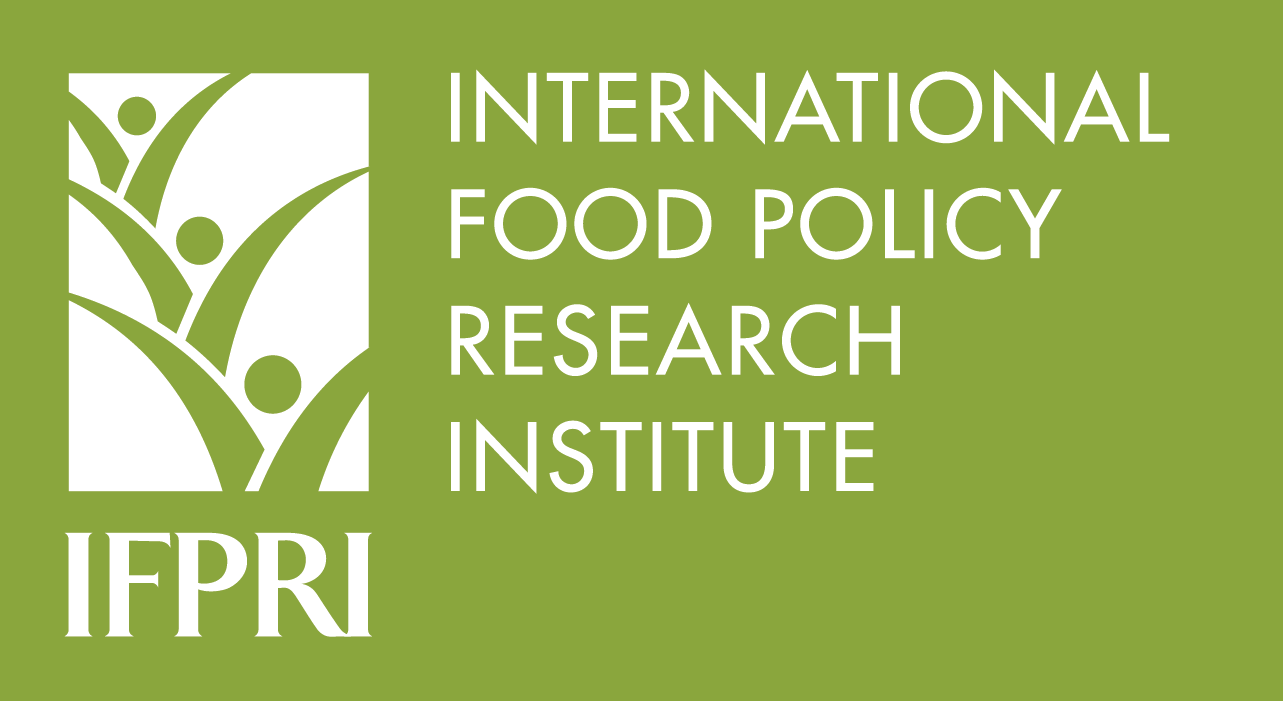Focal point
Location
About IFPRI
The International Food Policy Research Institute (IFPRI) provides research-based policy solutions to sustainably reduce poverty and end hunger and malnutrition in developing countries. Established in 1975, IFPRI currently has more than 500 employees working in over 50 countries. It is a research center of theCGIAR Consortium, a worldwide partnership engaged in agricultural research for development.
Vision and Mission
IFPRI’s vision is a world free of hunger and malnutrition. Its mission is to provide research-based policy solutions that sustainably reduce poverty and end hunger and malnutrition.
What We Do
Research at IFPRI focuses on six strategic areas:
- Ensuring Sustainable Food Production: IFPRI’s research analyzes options for policies, institutions, innovations, and technologies that can advance sustainable food production in a context of resource scarcity, threats to biodiversity, and climate change. READ MORE
- Promoting Healthy Food Systems: IFPRI examines how to improve diet quality and nutrition for the poor, focusing particularly on women and children, and works to create synergies among the three vital components of the food system: agriculture, health, and nutrition. READ MORE
- Improving Markets and Trade: IFPRI’s research focuses on strengthening markets and correcting market failures to enhance the benefits from market participation for small-scale farmers. READ MORE
- Transforming Agriculture: The aim of IFPRI’s research in this area is to improve development strategies to ensure broad-based rural growth and to accelerate the transformation from low-income, rural, agriculture-based economies to high-income, more urbanized, and industrial service-based ones. READ MORE
- Building Resilience: IFPRI’s research explores the causes and impacts of environmental, political, and economic shocks that can affect food security, nutrition, health, and well-being and evaluates interventions designed to enhance resilience at various levels. READ MORE
- Strengthening Institutions and Governance: IFPRI’s research on institutions centers on collective action in management of natural resources and farmer organizations. Its governance-focused research examines the political economy of agricultural policymaking, the degree of state capacity and political will required for achieving economic transformation, and the impacts of different governance arrangements.
Research on gender cuts across all six areas, because understanding the relationships between women and men can illuminate the pathway to sustainable and inclusive economic development.
IFPRI also leads two CGIAR Research Programs (CRPs): Policies, Institutions, and Markets (PIM) andAgriculture for Nutrition and Health (A4NH).
Beyond research, IFPRI’s work includes partnerships, communications, and capacity strengthening. The Institute collaborates with development implementers, public institutions, the private sector, farmers’ organizations, and other partners around the world.
Resources
Displaying 1321 - 1325 of 1521Growth and poverty in rural China
Public investment, together with institutional and policy reforms, has contributed substantially to rapid economic growth in rural China since the late 1970s. This rapid growth has also led to dramatic reductions in rural poverty. In this study we use a simultaneous equations model and time-series (1978-97), cross-sectional (25 provinces) data to analyze the differential impact of different types of public investments on growth and poverty reduction in rural China.
The application of social cost-benefit analysis to the evaluation of PROGRESA
In August 1997 the Mexican government introduced a key component of its overall development and poverty alleviation strategy, the PROGRESA program, in the most marginal rural areas of the country. The expansion of the program across localities took place in phases. By the final phase 11 of the program in early 2000, the program included nearly 2.6 million families in 72,345 localities in all 31 states. This constitutes around 40% of all rural families and one ninth of all families in Mexico.
Socio-economic differentials in child stunting are consistently larger in urban than rural areas
Urban-rural comparisons of childhood undernutrition suggest that urban populations are better-off than rural populations. However, these comparisons could mask the large differentials that exist among socioeconomic groups in urban areas. Data from the Demographic and Health Surveys (DHS) for 11 countries from three regions were used to test the hypothesis that intra-urban differentials in child stunting were greater than intra-rural differentials, and that the prevalence of stunting among the urban and the rural poor was equally high.
Land tenurial systems and the adoption of Mucuna planted fallow in the derived savannas of West Africa
In 1987, an improved resource management system that incorporates velvet bean (Mucuna pruriens var. utilis) to address soil fertility and weed (Imperata cylindrica) infestation was introduced to the small-scale farmers in a densely populated area of the derived savannas in Benin Republic (West Africa). Six years later, an adoption study was conducted to assess factors driving the adoption process. Four types of land tenure systems based on mode of access to land were identified: divided inheritance, purchasing, gifts, and sharecropping/renting.
Impact of land tenure and other socioeconomic factors on mountain terrace maintenance in Yemen
This paper describes the land property rights and tenure systems in the western escarpments of the Yemeni Highlands, and analyses the impact of land tenure arrangements and other socioeconomic factors on terrace maintenance. Owner-cultivated land is dominant in the terraced area, but more than one-third of the land is sharecropped. Terraces cultivated by landowners have a lower number of broken walls per hectare than those cultivated by tenants under sharecropping arrangements.



